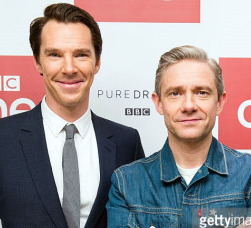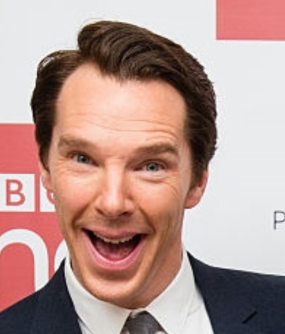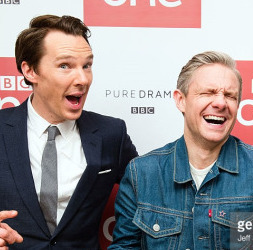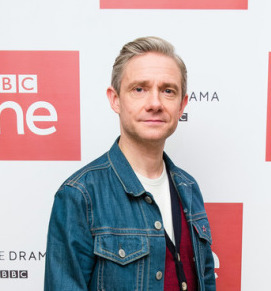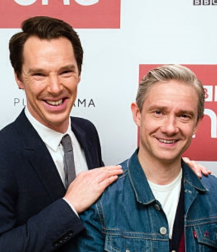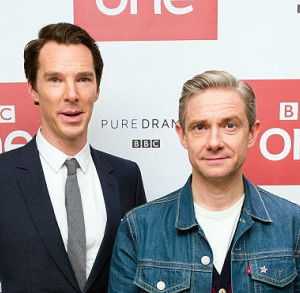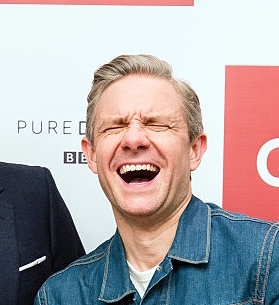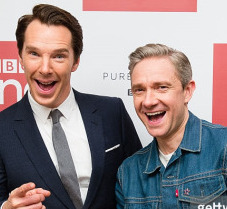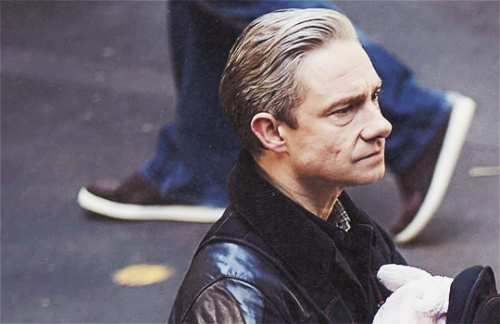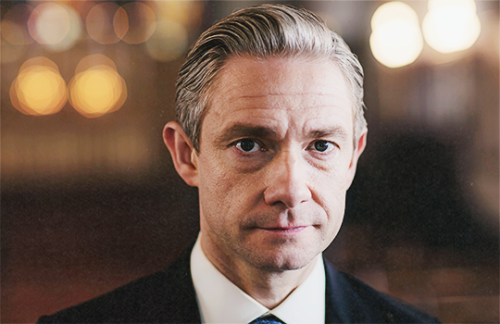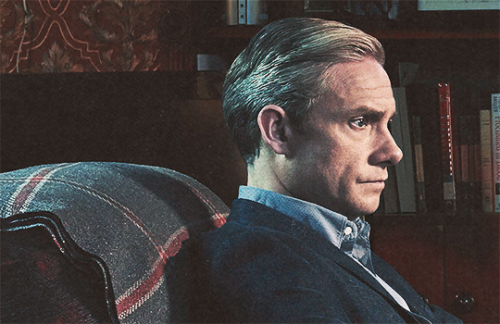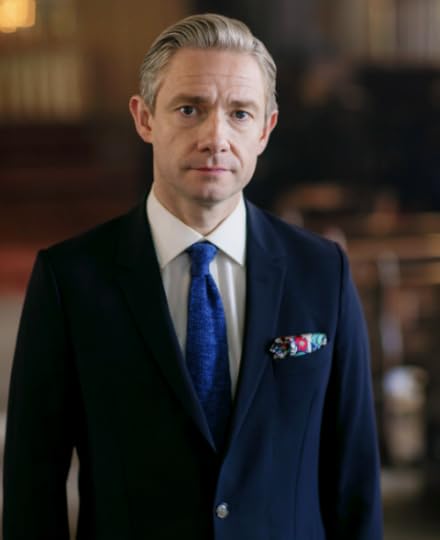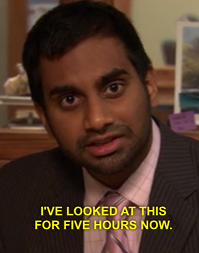XistentialAngst's Blog, page 38
December 19, 2016
Your Season 4 Required Reading
Haven’t looked at the canon yet? Read it years ago? Locked in a maximum-security prison with an allowance of one book per month? Never fear! Here’s what you need to read before next season.
Link to all the stories
En español
En français
If you have no time:
The Six Napoleons The basis for the first episode.
The Dying Detective The starting point for the second episode and second gayest story in all the canon. Also, BAMF Watson.
The Three Garridebs The officially gayest story in the canon. Reads like a hurt-comfort fic. The “Garridebs moment” is likely when Sherlock reveals his feelings to John.
The Final Problem Presumably the basis for the third episode. The basis for Reichenbach; since we’re probably revisiting the Fall anyhow, it’s good to take a look.
If you have a little more time:
The Devil’s Foot Third gayest story; fits well with The Dying Detective; Watson is BAMF; possible references in trailers
The Lion’s Mane Possible references due to setlock on the beach
The Valley of Fear The only Holmes novel not yet adapted on the show; Mary may mirror Birdy Edwards. One of the few stories in which Moriarty is mentioned. Lots of husbanding.
The Sign of Four The AGRA backstory and Mary Morstan’s introduction
Silver Blaze Likely reference due to car chase scenes
The Three Students Significance of 1895; an important base for queer readings of the canon
The Yellow Face Possible setlock and could relate to Baby Watson’s face never being shown.
The Blue Carbuncle Referenced in Mrs. Hudson’s outfit.
The Dancing Men Possible existing references
If you have nothing better to do:
Read the whole canon. It’s worth it. They’re genuinely good stories, and Mofftiss frequently slip in references to stories throughout the canon.
Watch the show again. The real question is: why not watch the show again?
Watch The Private Life of Sherlock Holmes. It’s a) really really gay b) pretty good and c) Mofftiss’s favorite Holmes adaptation, the inspiration for the show’s direction.
Watch the pilot. It’s called the gay pilot for a reason.
Read John’s blog. He’s so in love and so bad at hiding it.
Listen to the Sherlock music. Iconic themes, such as Sherlock’s, John’s,
Mary’s, and the title theme, often indicate the feelings and motivations behind characters’ actions.
Watch TJLCE and read LSiT’s meta Fandom classics.
If you can’t get enough:
Read The Stark Munro Letters. It’s ACD’s self-insert fic about his crush that single-handedly proved to me that that man was not straight.
Watch the Doctor Who episodes containing Madame Vastra and/or the Eleventh Doctor. Madame Vastra and Jenny are fem!lizard!Johnlock; you will never doubt Moffat again. The Eleventh Doctor and Clara have Johnlock parallels that are hard to ignore.
Watch other adaptations, such as Granada Holmes. The show draws on all things Sherlock Holmes, not just the stories.
Read M Theory. tl;dr: if your name starts with M, you’re a baddie.
Read old meta. Much of the foundation of TJLC is based on meta from 2014 or before. Go through the tags and archives of your favorite writers, or ask them where you can find resources on every topic from homosexuality in Victorian times to the importance of tea.Happy reading!
-soe
I referenced posts by @inevitably-johnlocked, @queerjawn, and @deducingbbcsherlock in this compilation.
Please, add any stories or meta on the canon you think people should know!
fantastic required/recommended reading (and viewing)!
thank you for compiling!!
The Lying Detective as The Sleeping Beauty
bug-catcher-in-viridian-forest:
The show has explicitly brought fairy tales in the plot several times.
Among others, Sherlock has parallels with both Snow White (read
Sherlock as Snow White and True Love’s Kiss ) and The Sleeping Beauty (read Sherlock as Sleeping Beauty), which are two heroines who are famously True Love Kissed while lying down.
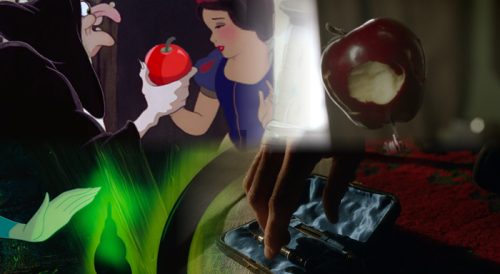
There has already been a metaphorical True Love’s Kiss at the end of The Abominable Bride, when John wakes
up
Sherlock in the plane (read Sherlock as Snow White and True Love’s Kiss).
Since the second episode of series 4 is called “The Lying Detective”, it could be in reference to another incoming True Love’s Kiss metaphor, with Sherlock lying down during Sherlock and John’s first kiss.
“The Lying Detective”’s title in fact has the same structure of “The Sleeping Beauty” and the verbs “lying” and “sleeping” have a similar meaning.
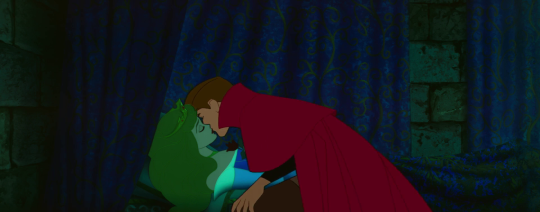
(Spoiler about a soundtrack title in this paragraph)
Which would also fit with the last track of The Lying Detective’s soundtrack being called “In The Tower”, where princesses, like the Sleeping Beauty) are traditionally located.
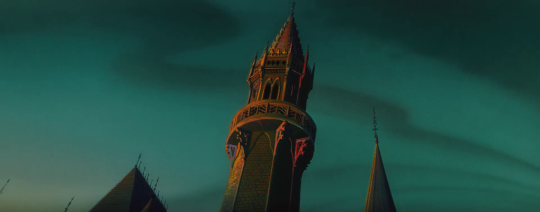
In series 4, there might be also be other parallels in which Rosemund Watson is equated to the Sleeping Beauty as well (read Rosemund Watson as Sleeping Beauty).
Interesting! Stopped Lying Down, the son title track, would go along with this.
johnlockfulfillment:(x)
missmuffin221:
beneathmymindscontrol:
lienxp:
inevitably-johnl...
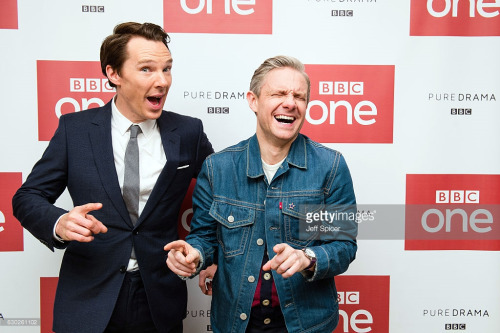
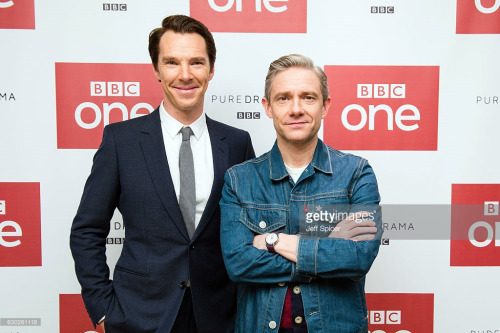
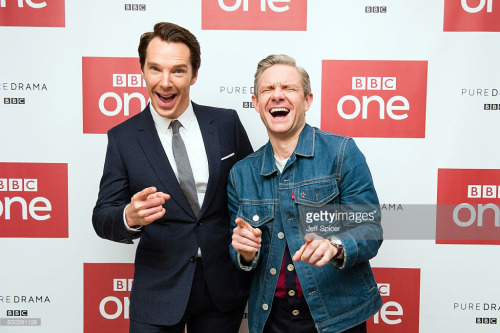
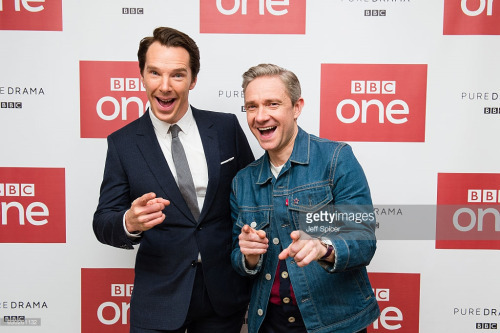

It’s too much.
FUCK ME FUCK ME FUCCK ME!!!
THEY’RE TOUCHING!!!!!
@beneathmymindscontrol please help me
Oh my freaking fucking mind has just blown away
I am dead. But In a happy way.
johnlockfulfillment:
this is too much - a moodboard
blackstarjp:
[HQ] Martin Freeman attend a screening of the...
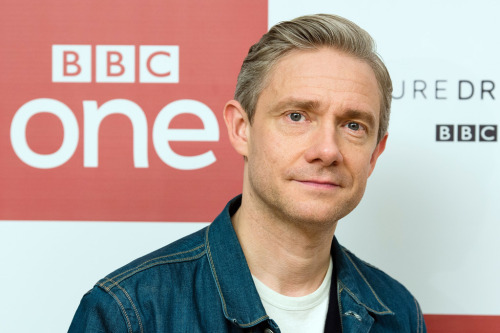

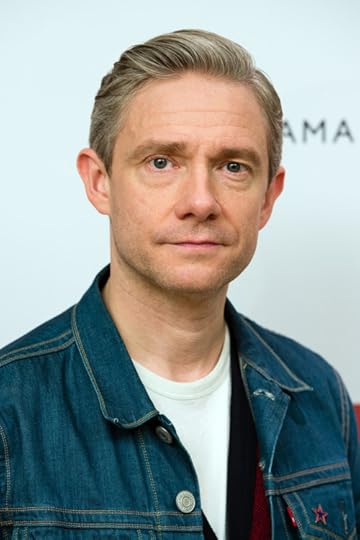
[HQ] Martin Freeman attend a screening of the Sherlock 2016 Christmas Special at Ham Yard Hotel on December 19, 2016 in London, England (x)
December 18, 2016
Can YOU crack the clues from this new Sherlock picture?
Yes I think I can manage that…
Let’s go for an image analysis! There is actually some stuff they got right, so I’ll probably repeat it.
As always, I will start by the composition. The composition here is very similar to the last pic (here my image analysis about it), but the framing and situation is different. The pic here is framed closer to the chairs, indicating it as the most important element. Which is just logical because the story is always about Sherlock and John, the other characters orbits around them.
Here we have an exception for the baby that is placed in light, indicating it as a very important element of the narrative. Except this importance, determined by position and lightning, is diminished by the fact we barely see more than a fabric, there is not even a hand to see.
That takes away a lot of vitality this pic could have had if the baby had been visible.
There is some theories about this baby, which are: the baby is fake, the baby isn’t John’s, the baby dies at some point. I really don’t believe the baby is fake, I think she will be born, but many details indicate to me that she will not live long enough to see her own christening.
The light that is cast on the baby here has something spiritual, very often the light suggest a hope, or an awakening, light can also be the symbol for knowledge (for the progression in finding knowledge and truth) but on some case it can be the symbol of the soul being protected by a spiritual, a divine, force - light is a symbol of safety. In a biblical reading, light happens to be the first creation of God, and represents the Good, the innocent, and the truth (Jesus presents himself as “the light of the world”
and John equates the believers to “the sons of light” - (x) ).
In our case, the light looks more like a symbol of innocence and hope, but the “truth” symbolism calls back to the fact the baby is actually tied to a secret. On this picture this is even more telling that the light in the whole room seems to emanate from the baby which for the characters represents a hope.
What is suggested here is that the baby has a really positive impact on the people around her, but her life is threatened, and given what I’ve already analysed, the baby is likely to be hurt or die. She will in any cases be an element of importance for the reveal of some truths the people around her are hiding.
On a literary symbolism, as you can read here, “
Light illuminates shadows, which means that with light a character might
be able to see the foil in another character or even see if the other
character is a liar or evil.”
Now note that almost no one is looking at her except Mrs Hudson - someone we had always analysed as someone who has a clear (and naive) view on things. She is presented as the character who is the most unaware of everything that is going on at any given time, but she may be the very one that sees the truth.
She is highly under estimated, as we see in ASiB, and the one that has the best emotional understanding of situations, as we see in TSoT where she understand her own story echoes Sherlock’s.
The look she throws at John screams “I don’t approve”, this is the look someone does when something is so blatant they can’t believe no one sees it. This is a very judgemental look, and I think what she can be judging there is the fact no one sees the truth this baby is carrying.
And the composition adds to this idea, she’s in the centre of the image, her position is denoting her importance.
Lets also note that she’s holding a cup of tea, a known symbol of homosexuality.
Now before I start examining the other characters in the background, let’s note that only John and Sherlock are looking straight at us. In photography this suggests an intimacy and a sincerity with the spectator.
A reminder: the spatio-temporal line makes the right of the image the future, and the left the past.
The fact only John and Sherlock look straight to us suggest they’re the only one to be sincere with us, the others all are trying to avoid the confrontation with our inspection. That doesn’t necessarily means they all have things to hide in a bad way, but they have secrets they don’t want us to see, and it can also mean they’re distracted by something, eluding the confrontation with us.
Now to the characters, from the left to the right, the things or people they’re looking at is important.
Lestrade is side-eyeing to the right, in Mary’s direction. It would be only logical that his suspicion gets tickled by Mary’s actions, since - as I have suspected since HLV - he’s investigation on who shot Sherlock.
This seems so improbable that police never got involved in this case, that I thought Lestrade might be working on it, with the help of Sherlock. After the scene at the hospital where Sherlock disappears and a bit later at Baker Street when John figures out who the shooter is, we simply never see him again.
But the thing we have to keep in mind is that Sherlock actually got shot and the case never seemed to have been investigated. For Lestrade, there is a shooter, and an official case to solve.
I think it’s probable that after Sherlock dealt with revealing the truth to John, he reached Lestrade to tell him about Mary, because he couldn’t really get away with “John and I know who it is, but we’re never gonna tell you anything about it”. It’s actually against the law to retain informations about an ongoing case, and Lestrade would have no other choice than act according to the law. Furthermore, his help is actually valuable to Sherlock.
So I think he has been working on this case, and whether Sherlock explicitly told him or gave him hints, he’s likely to find out Mary is involved.
Also, he’s looking quite “casual”, hands in pockets suggest a level of confidence but also the fact one tries to hide his hands in fear of revealing his thoughts (there’s subtleties to the meaning of this gesture, in a conversation it can in some contexts mean one is lying, or keeping a secret) - since hands are a very expressive body part.
Mary is looking straight to the right, her chin slightly up. It suggest a high confidence, as if she believed she was unreachable. She looks confident and disdainful, she looks at the future she believe is bright for her. She’s very obviously in a position of superiority.
He hands crossed in front of her are odd to me because of the way she first cross her wrists before crossing her fingers. Such a position usually would suggest a contrariety and anxiety, but this peculiar position makes it look more like a gesture of ingenuity, as a children would do to look sage.
Note that this is a position we’ve seen before:

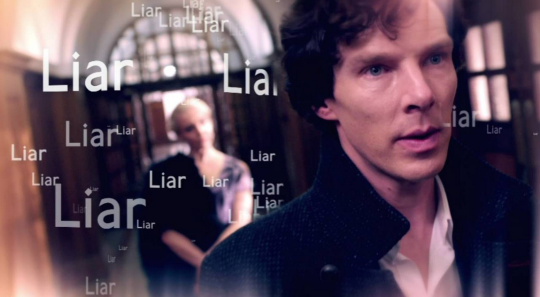
Now that I see these two shots together, I think the promo pic was foreshadowing HLV rather than TEH.
This position is telling she’s a liar looking like an innocent.
Mycroft looks at Sherlock. There’s not much mystery with this, Mycroft is Sherlock’s protector, and the keeper of their secrets. It’s calling back to the Redbeard / The Other One mystery, and also to the fact Sherlock is more vulnerable than he ever let think.
He’s also probably Moriarty’s instrument to get to Sherlock, so it’s not only a benevolent watch he has on Sherlock.
His body language here reminds Lestrade’s, he has one hand hidden, but the other one is fully uncovered. It can express the double role Mycroft has. He keeps secrets but his intentions are sincere, and since his uncovered hand is the closest to Sherlock, it suggests he is sincere with his brother, that he cares about him. It’s almost as if he was about to reach for Sherlock, to put his hand on Sherlock’s shoulder as a way to say “it’s ok, I’m here”.
I’m absolutely confident in the fact Mycroft loves his brother and wants his well-being, but that he has to keep things from him and to play on several levels including one where he has to basically be a bad person. Hence Mrs Hudson’s “you reptile”, probably.
Molly, to finish, is looking at the left, she doesn’t seem to look at anyone in particular but everyone in her field of vision is visible except for Sherlock. I think she may feel like Sherlock deceived her. That was already the feeling in series 3, accentuated in TAB, and she probably had enough by now. She looks very sad and in distress, and setback.
It’s like she’s seeing everything from afar and with a clarity that reveals to her the gloom of everything. She sees what is going wrong, the tensions, the pain that Sherlock and John hide from her, and this is causing her a lot of pain.
She’s always been the compassionate and clever person that cares for others. She has shown herself the most empathetic person in the show, but slowly, she started to understand she was not valued as she should have been. She’s stepping away, and in the process, she’s letting go of Sherlock and her fantasies, and even giving up on him - more in the fact of being his minion and support than him completely. I think she’s starting to stand for herself rather than for others. She is in this pic literally turning her back on Sherlock and on future.
But she still cares about her friends, because this is who she is, and she still wants to make them realise some things about them, and also about her.
Now lets go back to composition and note that if Mrs Hudson is in the centre, Lestrade and Mary are behind John while Mycroft and Molly are behind Sherlock, that suggests their narratives are closely tied.
I was keeping John and Sherlock for the end. There is not so much to say but not the least: first of all their the most important point in this composition, which is not a big info for us, but that says everything revolves around them. This is a nice reminder that the show is about them, that the story is theirs, not the people in the back.
Second thing I note is how close their chairs are, pretty much like they were during the stag night. Sherlock’s chair is slightly turned to face us. This and the fact he looks at us suggest he will confide something to the audience. That can only be about his personality, his story, and his feelings. As I presumed the audience will be the first to know Sherlock loves John.
John is leaning toward Sherlock, and he’s looking at us too. Leaning toward someone is very telling of the desire to get close to this person.
In contrast, it somehow also makes it look like he’s tensed, more than Sherlock who’s comfortably installed in his chair, wearing his dressing gown, legs crossed.
it suggest Sherlock is at peace, calm, while John is still struggling with his anxieties and unsure about the whole situation. This is coherent with the progress in narrative that indicates Sherlock will be the first to end his introspection and to make peace with his own struggles.
John still has to make this work on himself. And the look he’s giving us suggest an underlying incredulity, and insecurity, that we can see if we look past the sassy expression.
I said I will be repeating stuff from the article, well to make this simpler I’ll just take back what they say and add my observations.
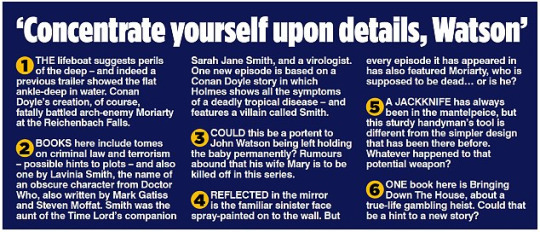
1 - That’s a fair point. But in this case the reference has also a more literal meaning, there will be a whole part in a port. Sherlock and John will find themselves on a boat. This calls back the canon story The Sign of Four in which there is a pursuit on the Thames, in order to recover the Agra treasure.
So, in a way, a bot can link to Mary’s backstory and her true identity.
And as boats suggest travelling, this is also a reference to Mary going to Morocco, which you can reach from my city by boat, the ferry is actually a very popular way to get to Morocco from France. I agree that’s not an info everyone knows but that worth noting it since there is the mention of a boat.
So, symbolically yes, the notion of perils is relevant, of course, but I don’t think we should stop at the fact it’s like a lifeboat. it anyway calls back to the symbolism of water, which in some case can be a symbol for emotions.
About the lifeboat, note that RNLI are the initials for Royal National Lifeboat Institution, which is a charity. On their official main page, here’s what we can read:
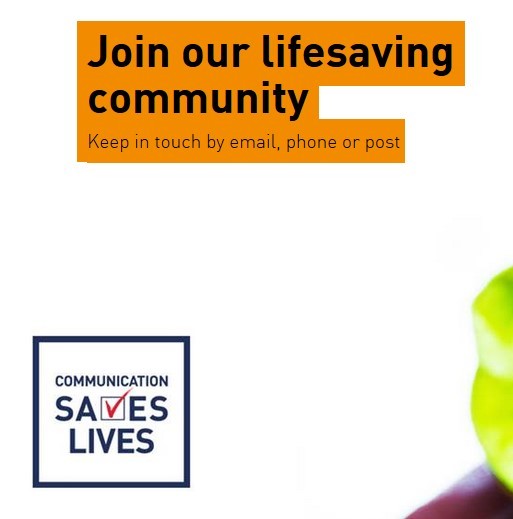
“Communication saves lives”, how ironic…
2 - That’s nothing new that the bookshelves are filled with books about criminology and law, that’s what Sherlock’s reading. I’ve never cared to look closely into it because this is text. Sherlock owns these books, magazines, and in canon he owns a kind of encyclopedia with Londoner personalities - he can have an equivalent of that in modern era. I’m more interested in the few books that aren’t about crime solving, when I can get an image where I can read the titles which happens only sometimes when I’m lucky and when I squink my eyes hard enough. I know “squink” doesn’t exist but I don’t know the right word for that. :o)
So I wasn’t aware of this DW / Smith reference, which is relevant - just not interesting enough to me, we don’t need such clues to know who Culverton Smith is and what TLD will be about. In this kind of image the most interesting clues are always the one pointing to the most obscure points of narrative.
3 - As I said earlier.
4 - Damn… and they dare to challenge us on analysis… Of course, this is tied to Moriarty but the smiley appears before that. Sherlock draws this some time after TBB to symbolise his hopes and also a form of ironic way to say happiness is out of reach, the smiley is mocking him. And he shoots it out of frustration, because John left with Sarah and all Sherlock’s attempts to get closer to John has failed, because of miscommunication.
The smiley is a symbol for Sherlock deceived hopes, and it’s something Moriarty is playing with. But more than Moriarty, this symbol is tied to Sherlock and John’s relationship - and precisely to Sherlock’s feelings.
5 - Does it.
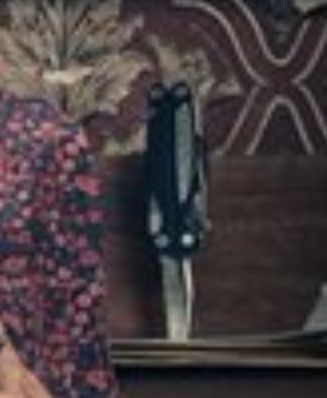
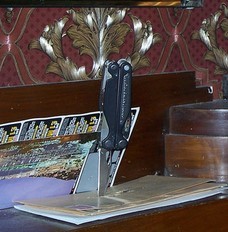
Second pic is quite old. That looks like the same knife to me, only seen on a different angle and different light.
Here another old pic:
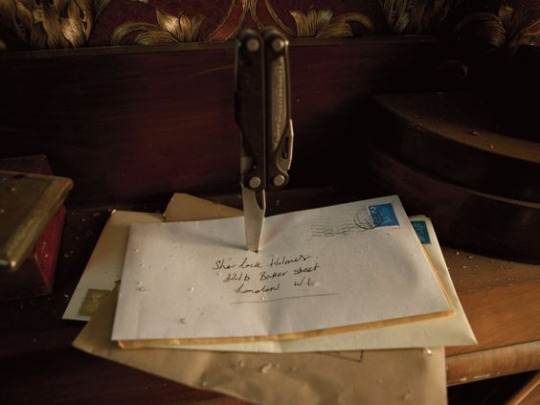
This is the same knife. I can’t believe they dared writing that, it took me twenty seconds worth of checking. XD
But it worth reminding that’s a weapon one can use to harm someone. Their remark is accurate in the sense that this object can find at any time its primary function. It worth reminding Mary stepped in front of it instinctively in HLV during the confrontation. Given her formation that’s something she would do, scan the room for any useful weapon in case she gets threaten.
6 - Gambling makes me think about Leinster Gardens and the fake houses Sherlock won. Adding to that the book is described as magnifying so much the truth (that’s supposed to be based on a real story) it’s not the truth anymore. “I don’t even know if you want to call the things in there
exaggerations, because they’re so exaggerated they’re basically untrue.”
- John Chang (x)
And it also makes me think about Watson in canon who’s a gambler. A characteristic taken back in Guy Ritchie’s movies, never in Sherlock.
That can refer also to Sherlock’s probable ability to count the cards like the students in the book - which was adapted in the movie 21 (that I’ve seen, appreciated but not more).
Apart from canon reference to John, the other thing I can think of is the Story of Silver Blaze, in which the case involves a fraud in order to win a gamble.
In this story the culprit is a man who tries to do surgery on a horse so he looses the run, because he lives a double life, he cheats on his wife with another woman who has expansive tastes, and he needs money to keep the lie going on.
—
So, Daily Mail, challenge met?
WOWEE, excellent analysis Keagan!
fideliant:(x)
wearitcounts:
rominatrix:
John Watson, BBC Sherlock series 4...
cumberbuddy:New Sherlock HQ images from the good peeps at...
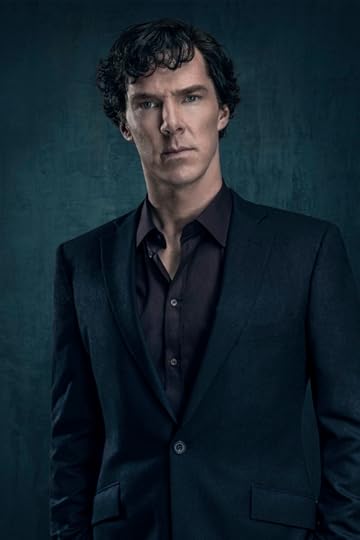

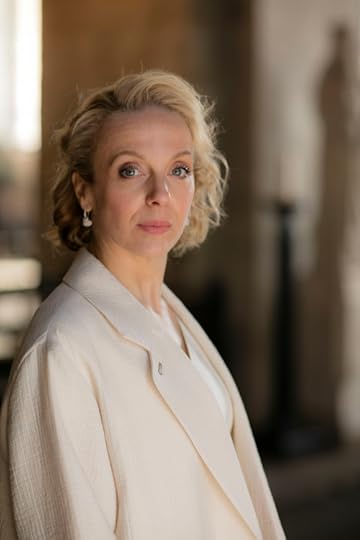

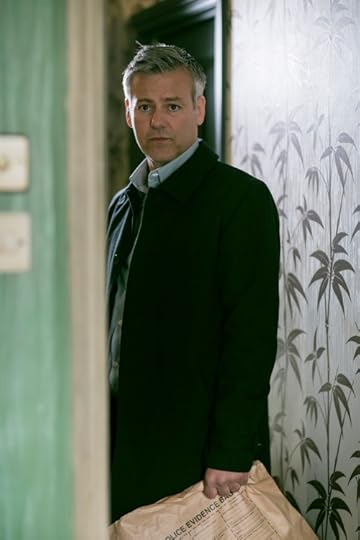
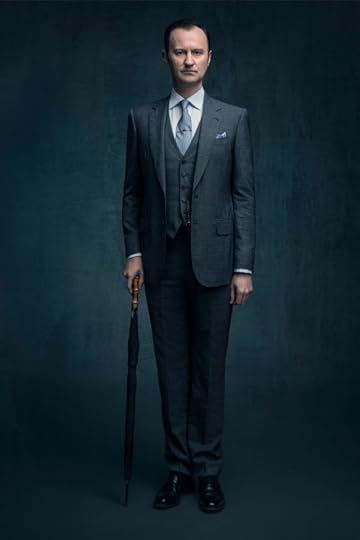
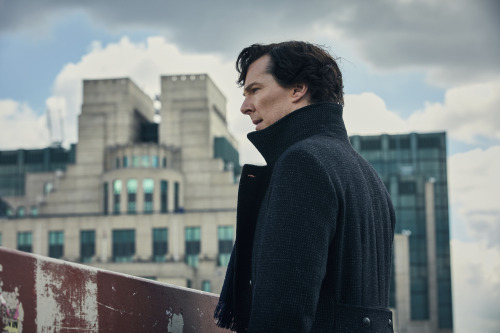
New Sherlock HQ images from the good peeps at Faraway.
John and Sherlock both look so deeply unhappy.
XistentialAngst's Blog
- XistentialAngst's profile
- 15 followers



